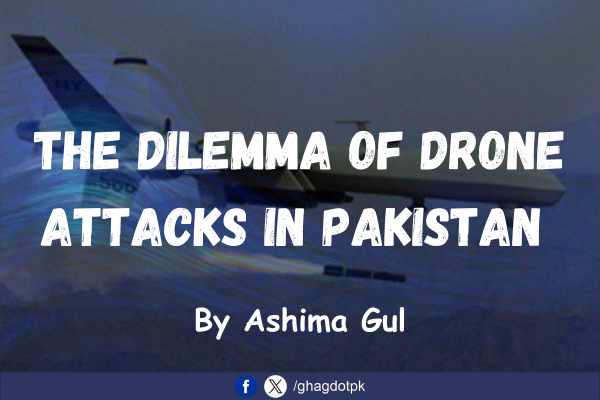By Ashima Gul
Despite the significant decline in drone attacks in Pakistan over recent years, the legacy of these strikes continues to cast a long shadow over the country’s social, political, and security landscape. Understanding this legacy is crucial for grasping the full impact of these operations and learning from the past to shape a more peaceful future. As the famous saying goes, “Those who do not remember the past are condemned to repeat it.” (George Santayana). This article revisits the history of drone attacks in Pakistan to ensure that the lessons learned are not forgotten.
Historical Context
The use of drone attacks in Pakistan and its surrounding regions has its roots in the early 2000s, particularly after the September 11, 2001, attacks on the United States. The first known drone strike in Pakistan occurred in 2004 under President George W. Bush’s administration, targeting Taliban commander Nek Muhammad Wazir in South Waziristan. This marked the beginning of what would become a long and controversial campaign of targeted killings through unmanned aerial vehicles (UAVs), primarily by the U.S. Central Intelligence Agency (CIA). The drone program was significantly expanded under President Barack Obama, peaking around 2010.
Statistics and Scale of Drone Strikes
From 2004 to 2018, approximately 420 to 430 drone strikes were carried out in Pakistan, resulting in an estimated 2,500 to 3,600 deaths. Among these, about 400 to 900 were civilians, including around 200 children. These figures have been reported by sources such as the Bureau of Investigative Journalism and Amnesty International
However, the frequency of these strikes significantly decreased after 2018, with no major drone attacks reported in Pakistan in the last few years.
Regional Impact
Drone strikes have had a profound impact on the stability of Pakistan and nearby regions. On the one hand, they have succeeded in eliminating high-profile militant leaders, thereby disrupting terrorist networks. For instance, the death of Baitullah Mehsud, the leader of the Tehrik-i-Taliban Pakistan (TTP), in a 2009 drone strike was a significant blow to the group.
However, the strikes have also fueled anti-American sentiment, contributed to the radicalization of local populations, and destabilized the region. The tribal areas of Pakistan, particularly North and South Waziristan, have been described as being in a state of perpetual warfare, with the civilian population caught between militants and drone strikes. This has led to mass displacement, with thousands of families fleeing their homes in search of safety.
Civilian Casualties: One of the most significant drawbacks of drone strikes is the loss of civilian lives. Estimates suggest that between 300 to 900 civilians, including children, have been killed in drone strikes in Pakistan from 2004 to 2018. This has led to widespread anger and resentment among the local population.
Radicalization: The civilian casualties and perceived violation of sovereignty by foreign powers have contributed to the radicalization of local populations. This has sometimes led to increased recruitment for militant groups, countering the intended effects of the strikes.
Sovereignty Violations: The Pakistani government has repeatedly condemned drone strikes as violations of its sovereignty.
Psychological Trauma: The presence of drones in the skies creates a constant atmosphere of fear and uncertainty among civilians. The threat of sudden and unexpected strikes has had a profound psychological impact on communities in affected regions.
International Opinions and Criticism
Internationally, the use of drones has been met with widespread criticism. Human rights organizations like Amnesty International and Human Rights Watch have condemned the strikes as extrajudicial killings, calling for greater accountability and transparency.
In the U.S., public opinion is divided, with some viewing drones as a necessary tool in the fight against terrorism, while others are concerned about the ethical and legal implications.
Recent Developments
In recent years, the frequency of drone strikes in Pakistan has decreased significantly, partly due to changing U.S. policies under the Trump and Biden administrations, which have shifted focus to other areas. However, the legacy of these strikes remains, with ongoing debates about their effectiveness and legality.
In Afghanistan, the use of drones continued until the U.S. withdrawal in 2021. The Taliban’s return to power has raised questions about the future of counterterrorism efforts in the region, including the potential resurgence of drone strikes.
Conclusion
Pakistan has made significant efforts to address the challenges posed by drone attacks, balancing its counterterrorism objectives with the need to protect its sovereignty and citizens’ rights. In its pursuit of peace and stability, the country has consistently called for an end to drone strikes, advocating for a comprehensive approach to counterterrorism that respects international law and human rights. As A.P.J. Abdul Kalam aptly noted, “War is never a lasting solution for any problem.” This wisdom underscores the need for a multifaceted approach, grounded in diplomacy, development, and respect for human rights, to achieve long-term peace and stability in the region.






